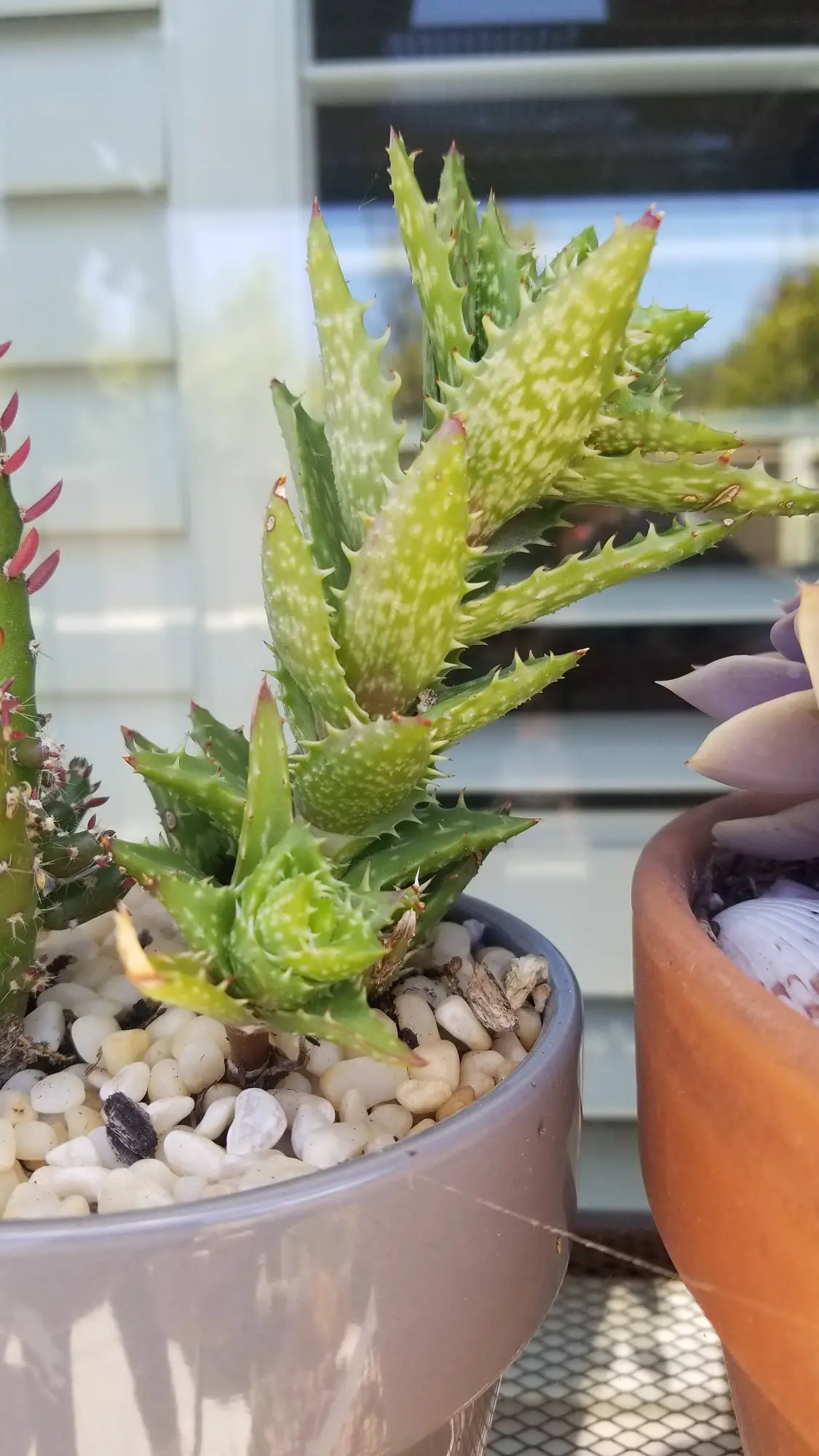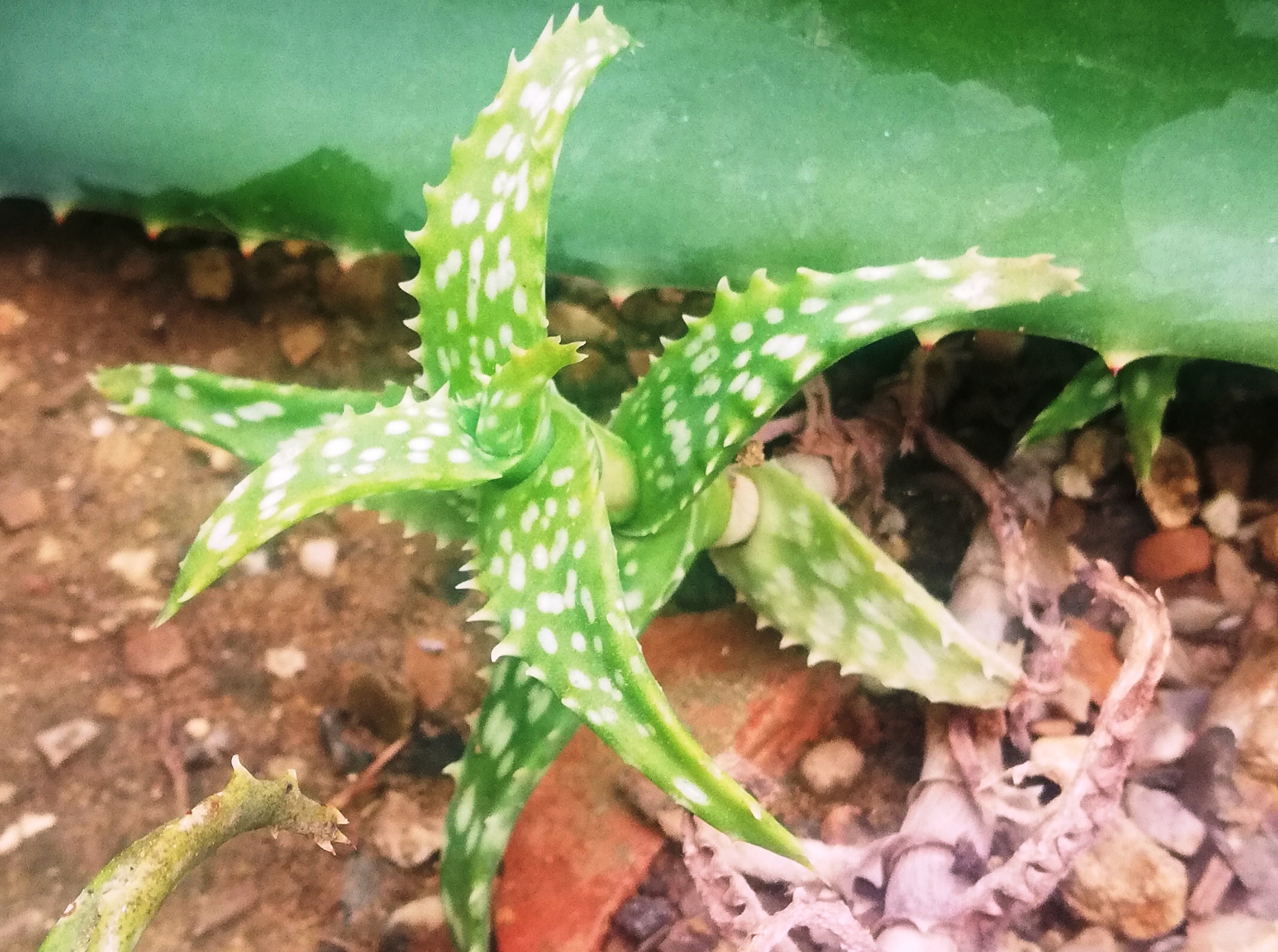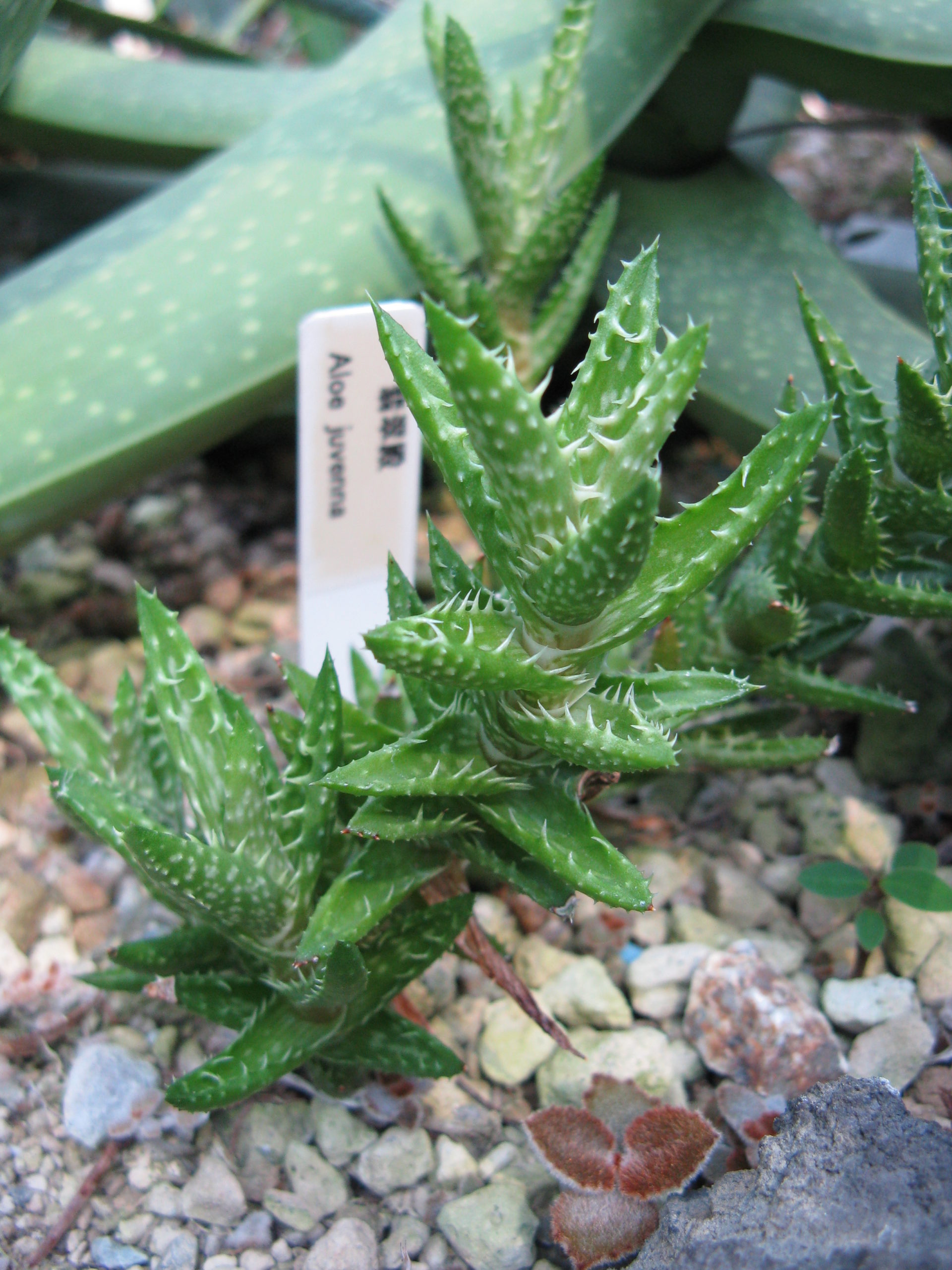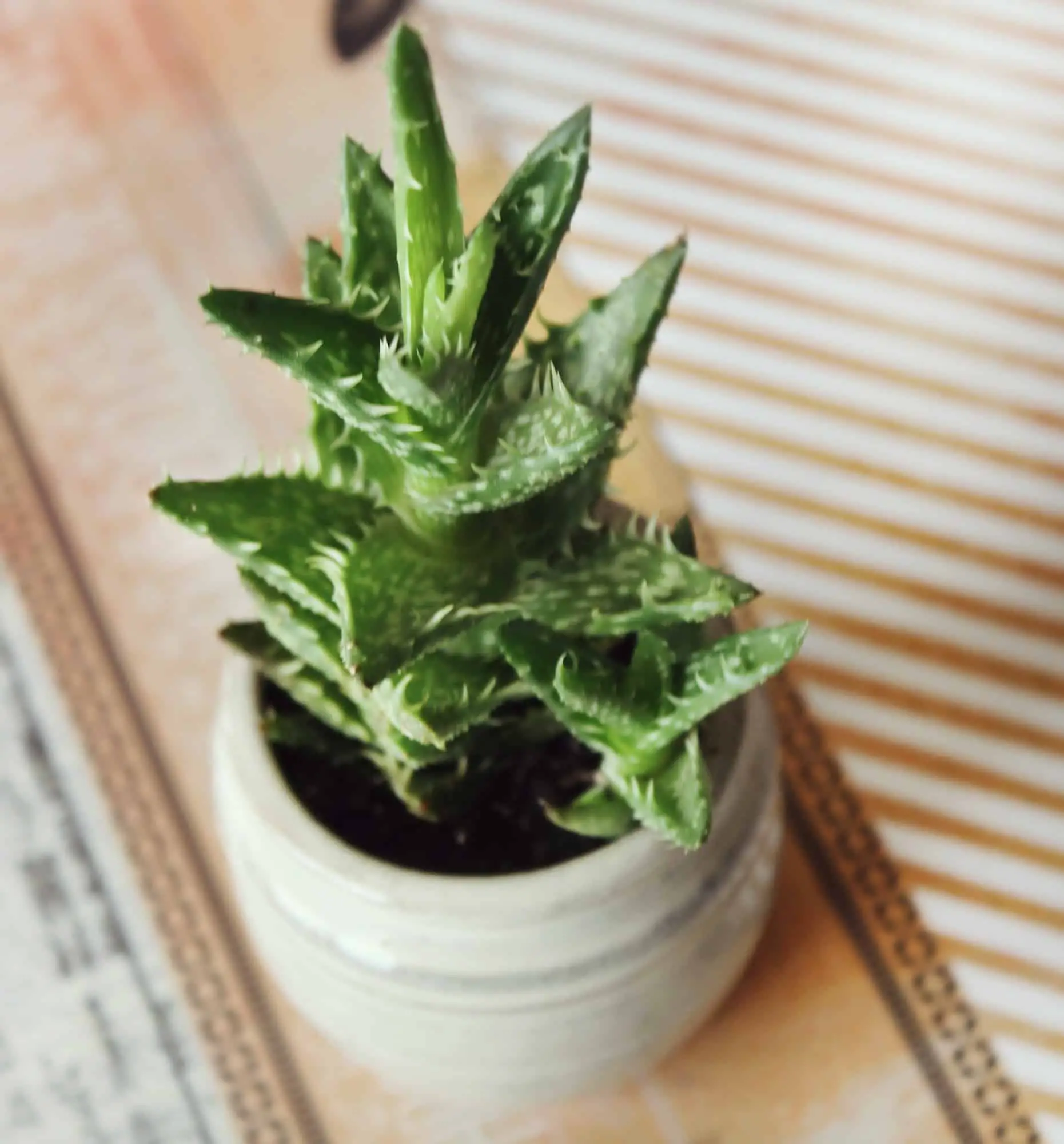Aloe juvenna, which is commonly known as Tiger Tooth Aloe, is a commonly grown yet beautiful succulent. The Tiger Tooth Aloe has spines that give it a cactus-like appearance. Although these spines may have an intimidating appearance, they are actually soft and will not prick your finger if touched. These succulents make a great addition to succulent arrangements, and they look nice in colorful containers.
Plant your Tiger Tooth Aloe in a location that is exposed to at least six hours of sunlight each day. Tiger Tooth Aloe will thrive in partial shade to full sunlight, but they should be slowly introduced to direct, hot sunlight. Like other succulents, you should water your Tiger Tooth Aloe thoroughly and allow the soil to dry between watering sessions.
The remainder of this blog post will be a detailed discussion on how to care for Tiger Tooth Aloe so you can enjoy this plant for years to come.
About Tiger Tooth Aloe

When caring for plants, the main objective is to create an environment that is as close to the plant’s natural habitat as possible. For this reason, it is helpful to have a basic understanding of your plants’ biology and its natural habitat.
The official scientific name for Tiger Tooth Aloe is Aloe juvenna Brandham & S.Carter. The name juvenna is the Latinized English word for juvenile. This plant earned the name juvenna because it was originally thought to be a younger version of another type of aloe.
Like other members of the Aloe genus, Tiger Tooth Aloe is a perennial, leaf-succulent xerophyte (Newton, 2001). Xerophytes are plants that have adapted to survive in areas with little or erratic precipitation. Succulence, which describes water storage tissue (aqueous tissue) in leaves, is a kind of xerophytic adaptation (Willert et al. 1992). It is important to keep Tiger Tooth Aloe’s xerophytic nature when developing a watering schedule.
Over 90% of the plants belonging to the Aloe genus are native to sub-Saharan Africa with most of these plants concentrated in southern Africa. Tiger Tooth Aloe, along with about 60 other types of aloe, is native to East Kenya near the border with Tanzania. In its native habitat, Tiger Tooth Aloe grows at high altitudes (2,300 meters / 7,550 feet).
Like other plants in the Aloe genus, the Tiger Tooth Aloe will grow better in warmer temperatures, but they can survive temperatures as low as 40°F. Tiger Tooth Aloe can be grown outdoors in USDA Hardiness Zones 9 through 11. If you live in a climate with four seasons, you can grow Tiger Tooth Aloe as an annual during the summer months.
In general, these plants are difficult to grow indoors unless they are put in front of a bright window.
Brief History Of Tiger Tooth Aloe Cultivation
Aloe juvenna was first described by Peter Edward Brandham and Susan Carter Holmes in an article published in the Cactus & Succulent Journal of Great Britain in 1979. At this time, nobody knew where this plant grew in the wild and many thought Tiger Tooth Aloe was actually a hybrid of an Aloe and Astroloba.
In the early 1980s, a few wild Tiger Tooth Aloe plants were found many miles away from human settlements in the Loita Hills in Kenya. This confirmed that Aloe juvenna is a true species.

Source: Brandham, P.E., Carter, S. (1982) Aloe juvenna rediscovered. Cactus and Succulent Journal of Great Britain, 44(3), 70.
Aloe juvenna is protected by the Convention on International Trade in Endangered Species of Wild Fauna and Flora (CITES). CITES is an international agreement between governments with the purpose of ensuring that the trade of wild plants and animals does not threaten their continued survival/existence. Tiger Tooth Aloe is listed in Appendix II of protected species which includes species not necessarily threatened with extinction.
Aloe juvenna vs. Aloe squarrosa
Aloe juvenna is often confused with Aloe squarrosa. Many plants sold as Aloe squarrosa are actually Tiger Tooth Aloe. Unlike Tiger Tooth Aloe, Aloe squarrosa grows curved leaves and is native to the island of Socotra, Yemen. Aloe squarrosa is also relatively rare in cultivation while Tiger Tooth Aloe is fairly common.

Aloe squarrosa 
Aloe juvenna
Tiger Tooth Aloe Blooms
Tiger Tooth Aloe produces orange-red blooms. Blooming typically depends on environmental factors that are difficult to control (e.g., ideal lighting, a wintering period, etc.). Some Tiger Tooth Aloe plants bloom every year, and some Tiger Tooth Aloe plants will never bloom.

Source: San Marcos Growers
These plants almost never bloom when grown indoors.
Lighting Requirements For Tiger Tooth Aloe
Tiger Tooth Aloes will tolerate partial shade to full sun. Plant your Tiger Tooth Aloe in a part of your garden that is exposed to at least six hours of sunlight each day.
If you are going to put your Tiger Tooth Aloe in a location that gets significantly more sunlight than it is used to, it is best to transition the plant to its new home slowly. You can do this by putting the plant in its new home for a few hours a day until it acclimates.
Like other aloes, Tiger Tooth Aloe will begin to change color if it is exposed to a lot of sunlight. This indicates that the plant is slightly stressed, but you do not need to be concerned if your Tiger Tooth Aloe becomes a bronze color.

Tiger Tooth Aloes – CAM Plants
Like other aloes, Tiger Tooth Aloes display crassulacean acid metabolism (CAM). CAM plants perform photosynthesis differently than most plants in that they open their stomata at night in order to conserve water during the heat of the day (Kluge and Ting, 1978). CAM plants can still perform photosynthesis during the day, but they will not open their stomata.
stomata – pores in a leaf that are involved in the exchange of carbon dioxide and water between the plant and the atmosphere.
Even though CAM plants process carbon dioxide at night, they still need plenty of light during the day. During the day, the plant converts malic acid to carbon dioxide. Reactions to light energy for the Calvin cycle which allows carbon dioxide to be converted into sugars.
Although CAM allows plants to conserve water in dry conditions, CAM plants often have low photosynthetic capacity and grow slower than plants that open their stomata during the day (C3 plants). For this reason, it is very important to make sure that your Tiger Tooth Aloe is receiving enough light. Otherwise, the plant will grow extremely slowly and possibly die.
Because Tiger Tooth Aloes are CAM plants, they will also have a hard time “competing” with C3 plants in more temperate environments. This means that you should not plant your Tiger Tooth Aloe in an area where other plants will grow in such a way that they “steal” your aloe’s sunlight.
Watering Tiger Tooth Aloe
Tiger Tooth Aloe has watering needs that are similar to other types of succulents. When growing Tiger Tooth Aloe outdoors, water the plant thoroughly and allow the soil to dry completely before watering again. Tiger Tooth Aloe plants will need different amounts of water depending on the plant. Pups with more established roots will need more water than plants with shallower root systems. Similarly, Tiger Tooth Aloe plants exposed to more sunlight will need more water than plants growing in partial shade.
If you are growing Tiger Tooth Aloe indoors, you should water your plant VERY infrequently. Otherwise, your Tiger Tooth Aloe could suffer root rot due to overwatering.
Tiger Tooth Aloe Offsets
Unlike many other types of succulents, you cannot propagate aloes from leaf cuttings. Luckily, Tiger Tooth Aloe seems to propagate itself by producing offshoots. You can actually separate these offshoots from the mother plants. The video below demonstrates how to separate Tiger Tooth Aloe pups.
Related Questions
Why is my Tiger Tooth Aloe turning brown?
When Tiger Tooth Aloe is exposed to a lot of sunlight, the leaves will begin to turn a reddish bronze color. This means that the plant is slightly stressed, but red/bronze leaves are usually not cause for concern. If you do not like the color of the leaves, move you plant to a spot with more shade.
However, if the plant’s leaves are squishy, your plant is probably suffering from overwatering. If this is the case, unput your plant and cut off any dead or diseased roots. Then allow the plant to dry completely before watering again. You may also want to consider putting your plant in a pot with soil that drains a little more quickly.
Is Tiger Tooth Aloe toxic to pets?
Although many species of aloe are used as medicine for humans, these plants are actually mildly toxic to cats and dogs. The gel found in most plants belonging to the Aloe genus contain saponins and anthraquinones. According to the ASPCA, these substances can result in vomiting, diarrhea, and lethargy when ingested by cats and dogs.
Saponins are soapy substances that comprise about 3% of the gel found in many types of aloe (Surjushe et al., 2008). Anthraquinones are phenolic compounds traditionally known as laxatives (Surjushe et al., 2008).

